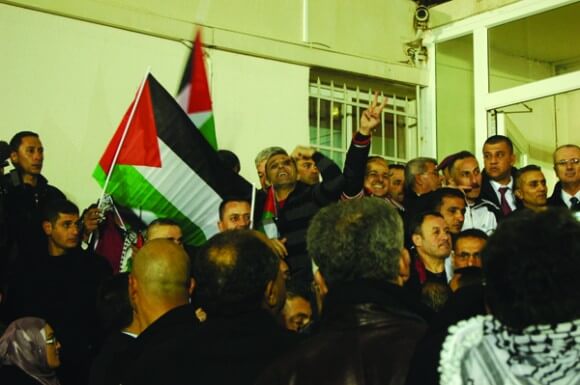
In a scaled back ceremony early Tuesday morning 18 Palestinians returned to the West Back in the third round of prisoners released by Israel during the Kerry-backed direct negotiations. The group, all pre-Oslo prisoners who were sentenced to 19 to 28 years, were transferred to Ofer military prison, and then entered the West Bank through the Beituna checkpoint around 2:30a.m., before arriving at the Palestinian Authority headquarters outside of Ramallah. While at the checkpoint, a clash erupted between onlookers and the Israeli military, with tear gas fired into the crowd of prisoner supporters.
In total 26 prisoners were released last night, with three returning to the Gaza Strip and five taken to East Jerusalem.
At the Muqataa, a short walk from downtown Ramallah, families of the released prisoners gathered despite the winter weather. Reflecting the malaise towards reaching a deal between Israeli and Palestinian leaders, less than half the number of supporters as the last two releases assembled for last night’s address, which was held in smaller plaza than the previous prisoner releases. Around one thousand waited hours until the men appeared with Palestinian Authority President Mahmoud Abbas just after 3a.m. The depression didn’t keep families from carrying released prisoners on their shoulders through the crowds, though. But there was noticeably less cheerleading, less dancing, and less impromptu chanting of national slogans.
Fatah flags were distributed by the Palestinian Authority.
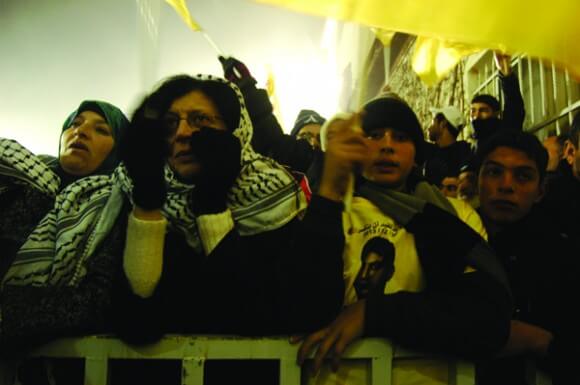
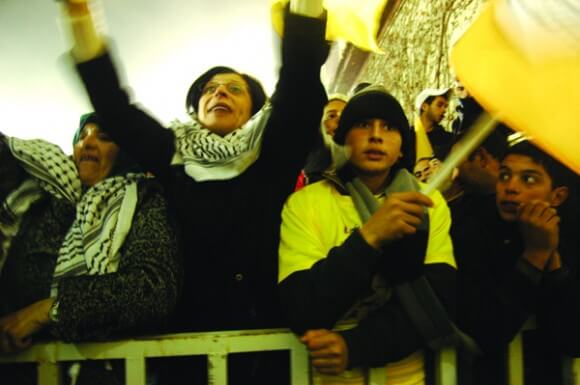
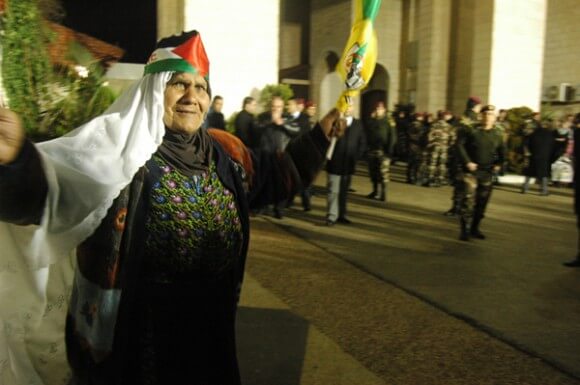
“This is a Palestinian area,” said Abbas in regards to the Jordan Valley in his speech, continuing, “It’s a red line nobody can cross.” He spoke from a modest podium decorated by a Palestinian flag held in place by yellow masking tape. The Jordan Valley is of immediate concern for the Palestinian negotiating team because over the weekend an Israeli legislative committee formally discussed annexing the eastern agricultural lowland bordering Jordan (just under a quarter of the total West Bank).
Already Israel controls 90% of the Jordan Valley. It was demarcated as “Area C in the Oslo peace accords, transferring full security control to Israel. The Jordan Valley has long been of particular interest to leaders of the Jewish state. After it was placed under military occupation in 1969 chief army architect responsible for shaping rivaling Zionist militias into the Israeli Defense Forces, Yigal Allon wrote that Israel should engage in negotiations, but hold out on reaching an agreement until it can create enough “facts on the ground” to secure the eastern border:
[I]t is Israel’s right, and indeed her duty, to establish settlements and security positions in border areas of settlement importance, making her own decisions about the question of political policy involved. Such accomplished facts, besides their primary security value, will also make their contribution to the political struggle for permanent political borders, by showing the Arab States that in this sphere, as in others, time is not necessarily on their side.[1]
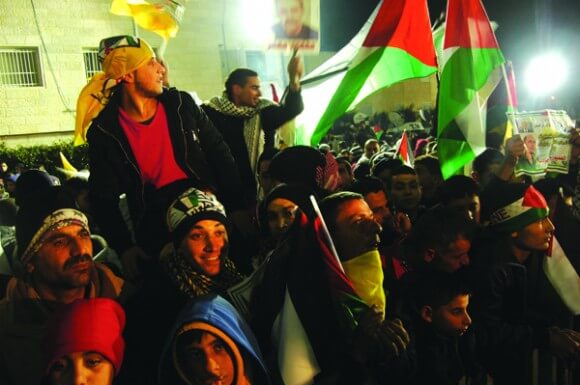
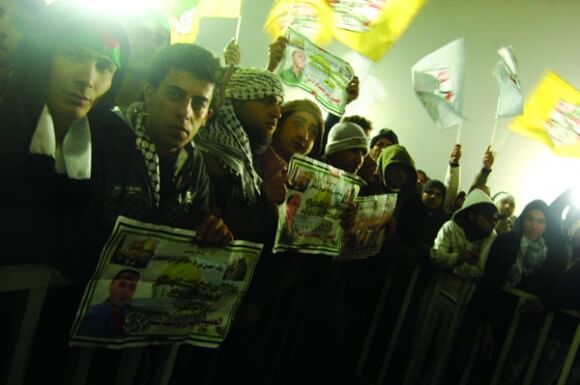
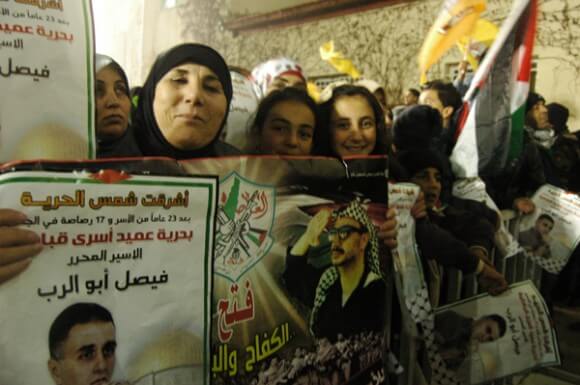
Last spring Netanyahu announced 104 Palestinian prisoners serving long-sentences would be released in four stages over the course of negotiations with Palestinian leaders. The number has since been bumped to 109 prisoners expected to be freed. The fourth and final group of prisoners will be let out before April. Months ago these commuted sentences were hailed as a goodwill gesture by Israel after finally agreeing to discuss the big issues: borders, refugees, Jerusalem and water. But now it seems they again will be tabled for establishing a “framework” of what will be discussed in the discussions, and Palestinian statehood has been officially put on hold in this round of talks.
Up until last night each prisoner release has coincided with an Israeli announcement to bolster settlement growth, particularly in East Jerusalem. Still, suffice to say that gearing up a bill to incorporate the West Bank’s bread belt into Israel is a more catastrophic blow to Palestinian sovereignty than building more high-rise, modernist apartments in suburbs over the Green Line and outside of the country’s internationally recognized borders. It would seem then that Allon’s strategy of settlement growth as a means of annexing the Jordan Valley has finally arrived. In return, the Palestinians will get 109 prisoners freed in a midnight celebration.
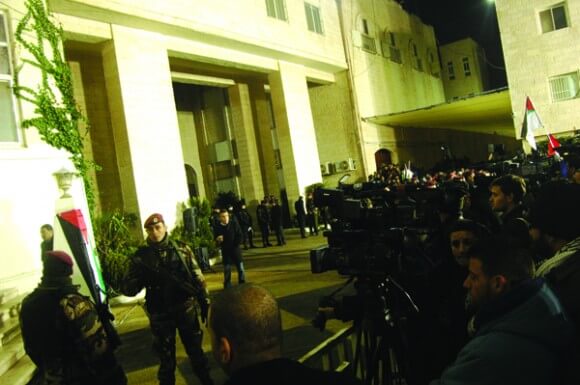
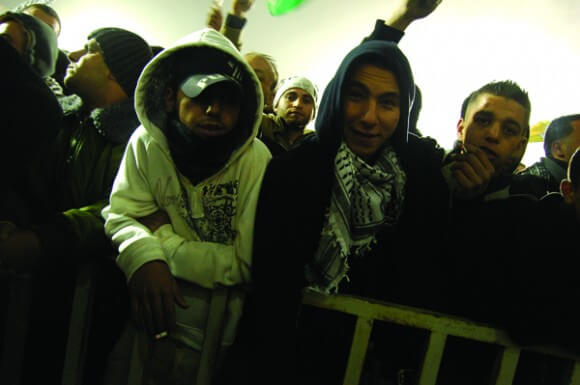
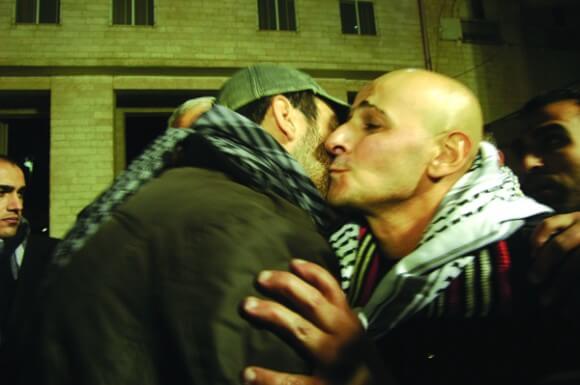
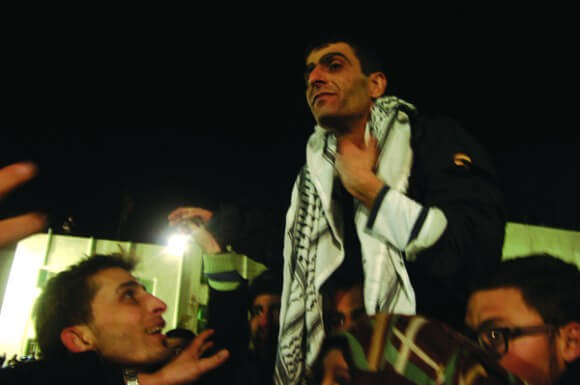
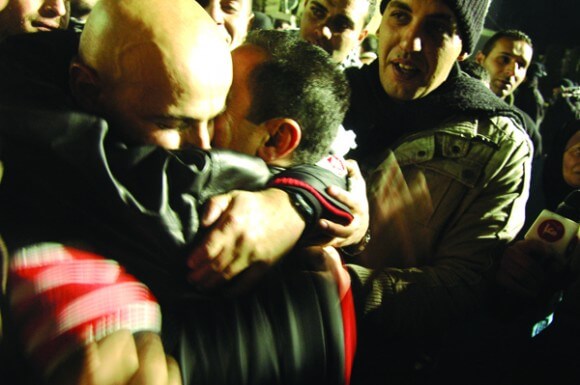
[1] Allon, Yigal, “Since June 1967,” The Making of Israel’s Army. (Great Britan: Vallentine, Mitchell & Co. Ltd., 1970), 106.

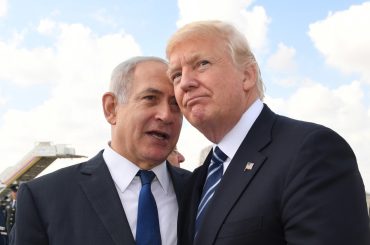
Flag waving and dancing in the street to celebrate the release of murderers and terrorists. And it is the Jews fault that there is not piece in the region? Give me a break… what a disgusting display of the true nature of the Palestinian leadership.
If Israel doesn’t want peace, than why release the terrorists?
The Valley annexation proposal may be little more than a shot across Kerry’s bows, I suppose.
Those Killers are freedom fighters.
That’s MW official statement ?!
Already Israel controls 90% of the Jordan Valley. It was demarcated as “Area C in the Oslo peace accords, transferring full security control to Israel.
That’s not really a good faith interpretation of the Accords. Israel was already in control of Area C, as the occupying power, before the Oslo Accords were signed. The portions of Area C and the Jordan Valley not physically occupied by settlements or military bases were actually supposed to be transferred to the Palestinians under the terms of the Oslo II Accords. The settlements and military bases were a final status issue, but 242 required Israeli military withdrawal from territories, like the Jordan Valley, that had been captured during the war:
Interim Agreement on the West Bank and the Gaza Strip (Oslo II)
(September 28, 1995) http://www.jewishvirtuallibrary.org/jsource/Peace/interim.html